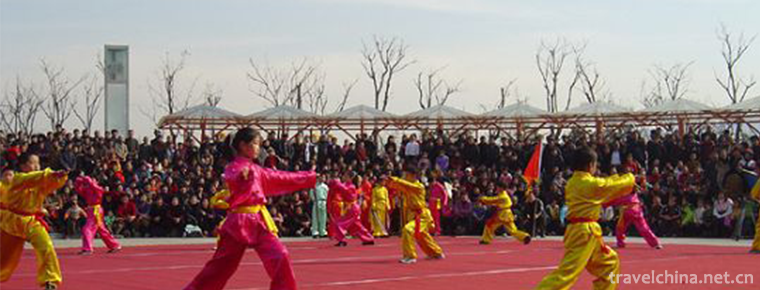International cooperation of Chengdu Giant Panda Base
Breeding cooperation
According to the major political and diplomatic needs of the country, under the leadership of the state, provinces and cities, the panda base has successively established a "long-term international cooperative breeding program for giant pandas" with Japan, the United States, Spain and France, and has successfully carried out cooperation and research in many fields such as giant panda breeding, animal behavior and conservation education. A total of 15 giant pandas have been bred and international cooperation has been achieved It is an outstanding achievement for breeding and giving birth to the largest number of offspring.
Baibang wildlife park, Wakayama, Japan
Since 1994, the base and Wakayama Baibang wildlife park in Japan have started the first international cooperative breeding program for giant pandas. They have cooperated to breed a total of 15 giant pandas with 8 fetuses and 15 cubs, and 12 of them survived. The fund of 19 million US dollars has been obtained, which has created the best result of international cooperation in giant panda breeding. In 2000, 2001, 2003, 2005 and 2006, the giant panda "Meimei" gave birth to 9 cubs in 5 fetuses and survived 7 cubs, creating the first case of Captive Giant Panda Breeding in autumn oestrus and 9 cubs surviving in winter. At present, "xiongbang", "Longbang", "qiubang", "Xingbang", "Meibang" and "Yongbang" born by giant pandas in Japan have returned to China successfully.
Atlanta Zoo (and Georgia Tech University)
Since 1999, the base has carried out the "international cooperative breeding program" with Atlanta Zoo (and Georgia Tech University of the United States). Thanks to the exquisite and skilled breeding technology of the base experts, lunlun, a giant panda in the United States, has given birth to three births and three cubs in 2006, 2008 and 2010. At the same time, remarkable achievements have been made in the research of giant panda behavior. Among them, "Meilan", a giant panda born in 2006, has returned to China and has become the global image ambassador of "Earth Hour", and has been famous since then.
Madrid zoo, Spain
In September 2007, Chengdu Panda Base officially cooperated with Madrid zoo in Spain to launch the international cooperative breeding program of giant panda. The breeding cooperation between the base and Madrid zoo in Spain has also made gratifying achievements. In September 2010, huazui, a female giant panda, successfully gave birth to a pair of twins, which is the first pair of artificially inseminated giant panda twins born overseas since China launched a long-term international cooperation program for giant panda breeding. In November of that year, Queen Sophia of Spain came to the giant panda Pavilion of Madrid zoo to visit the giant panda and feed the cubs.
Boile zoo, France
On January 15, 2012, the male giant panda "Yuanzai" and the female giant panda "Huanhuan" of the base flew from Chengdu to zooparc de beauval, France, to carry out a 10-year international cooperation program on Giant Panda Breeding between China and France, and cooperate on the key technology research of giant panda breeding and the preliminary research of giant panda Wild release.
Toronto Zoo, Canada
On March 24, 2013, the male giant panda "Damao" of Chengdu Panda Base flew from Chengdu to Toronto Zoo in Canada by special plane to carry out the 10-year international panda breeding cooperation program between China and Canada.
Berlin Zoo, Germany
The international exchange and cooperation of giant panda between China and Germany was officially launched in 2017. Two giant pandas, Mengmeng and Jiaoqing, selected from the panda base, arrived in Germany on June 24, 2017 and stayed in the Panda House of Berlin Zoo on July 5 of the same year.
The success of international breeding cooperation between the base and foreign zoos has made an important contribution to effectively promoting the development of global giant panda conservation research, and played a special and important role in strengthening international friendship, enhancing the image of Chengdu City, and improving the city's popularity and reputation.
Scientific research cooperation
Through project funding, cooperative research, talent exchange, technical support, personnel training and other ways, the base has established a wide range of international scientific research cooperation network and long-term close scientific research cooperation relationship with many famous foreign zoos, research institutions, conservation organizations and universities. World Wildlife Fund
As early as 2007, WWF Chengdu office established a project cooperation with the Ministry of science and education of Chengdu Giant Panda Breeding Research Base. In order to reduce the pressure on the ecological environment, WWF has carried out a lot of alternative livelihood projects in the communities around the Giant Panda Nature Reserve, and achieved great success. At the same time, WWF also attaches great importance to the protection education of local communities, hoping to further protect the ecological environment of the whole nature reserve. On September 24, 2008, WWF and Chengdu Giant Panda Breeding Research Base gathered together and signed a memorandum of intent on cooperation. In the future, the two sides will carry out cooperation in the assessment of the number of giant panda populations and their habitats after the earthquake, assist in the reconstruction of ecological protection infrastructure in the reserve, conservation education, sustainable community economy and giant panda reintroduction plan.
International Union for conservation of nature
Since 1996, it has been working with IUCN / SSC / CBSG to develop giant pandas
Biomedical and reproductive biology research. include:
1、 Gametophyte biology of giant panda;
2、 Reproductive endocrinology of giant panda;
3、 Biomedical examination of giant panda;
4、 Establishment of giant panda sperm bank.
National Cancer Institute genomic diversity Laboratory
Full cooperation with NIH / National Cancer Institute (USA) in:
1、 Research on the identification of captive giant panda's offspring;
2、 China's feline sample bank was established (International feline sample bank);
3、 Genetic resource bank and conservation of South China tiger;
4、 Genetic diversity of wild giant panda.
East Bay Zoo Association, Auckland, USA
In 2002, it signed a cooperation plan with the East Bay Zoo Association of Auckland City to carry out research on giant panda protection.
University of Maryland
The laboratory had technical exchanges with the University of Maryland in the United States on the diagnosis of giant panda pregnancy by B-ultrasound and biochemical analysis.
purdue university
Chengdu Research Base of giant panda breeding cooperates with Purdue University.
China Wildlife Conservation Foundation, Auckland, California, USA
In 2002, it launched a cooperation program with the China Wildlife Protection Foundation in Auckland, California, USA to raise funds for giant panda conservation and research
The Auckland wildlife protection foundation and the base jointly raised funds for giant panda protection in the United States.
National Zoo Conservation and Research Center, schmiesanlin, USA
The National Center for conservation research in the United States is cooperating with the National Center for conservation studies in the United States. Cooperation projects include:
1、 The cause of breeding disorder of giant panda;
2、 Serum research on infectious diseases of giant panda and little panda;
3、 Development of genetically engineered giant panda canine distemper vaccine.
university of glasgow
In cooperation with Glasgow University in the United Kingdom, the national international science and technology cooperation project "analysis of giant panda milk protein and development of artificial milk" was carried out.
Chester Zoo, UK
In 1999, it cooperated with the north of England Zoological Society (UK) in giant panda research. The cooperative research fields include: 1. Reproductive biology; 2. Genetic research; 3. Nutrition research.
In 2001, cooperation research was deepened. Carry out specific research projects: apply for the Wellcome Trust Fund with the University of Liverpool to develop the giant panda microsatellite markers. In this study, dynal magnetic beads enrichment method was used to screen microsatellite markers from giant panda insert library. Finally, nearly 300 positive clones were obtained, 54 microsatellite sequences were isolated, and 20 pairs of polymorphic primers were obtained. This achievement won the second prize of Chengdu Science and Technology Progress Award in 2007. Later, this set of Technology (magnetic bead enrichment technology) was also applied to the research and development of microsatellite markers of rare animals endemic to China, such as South China tiger, little panda, forest musk deer and Tibetan macaque. More than 10 doctoral and postgraduate students were trained. It has led and promoted the development and application of microsatellite markers for endangered wildlife in China.
Since 2005, a series of conservation education projects have been launched.
Japanese Universities
In 2004, it signed a comprehensive cooperation agreement with Japanese universities
1、 Establishing research institutions among themselves;
2、 Jointly set up research projects (Japanese universities, relevant foundations and government agencies);
3、 Exchange of scholars and researchers;
4、 Cultural exchanges between China and Japan.
In 2006, it signed the agreement of "Japan university research intern project" with Japanese university.
Japanese Keio University and kobayuan fund
From 2001 to 2007, he carried out "Research on edible bamboo of giant panda" with Keio University and kobayuan foundation. Two kinds of bamboos belonging to Pleioblastus, Guanyin, Indocalamus and bamboos have been planted on the land of 3km2 inside and outside the base, with a total of 5 species and more than 5000 clumps, and preliminary success has been achieved.
Cooperation platform
1、 Since 1989, the base has continuously organized and hosted 19 important international academic seminars in the field of giant panda protection, the annual meeting of the Giant Panda Breeding Technical Committee.
2、 From 1998 to 2000, we organized three "biomedical inspection activities for giant pandas"; from 1998 to 2009, we carried out 10 technical trainings, including "comparative study on cryopreservation methods of giant pandas", "paternity identification of captive giant pandas", "Research on microsatellite technology of giant pandas", "sampling of feline animals" and "training seminar on genetic management of captive giant pandas" 。 Through the above-mentioned meetings and technical training, the base discussed giant panda protection strategies and shared research achievements with giant panda experts from more than ten countries, including the United States, Japan and the United Kingdom, thus building an international platform for friendly exchanges for the development of giant panda protection.
In recent years, the base has also carried out a series of international academic exchange activities by inviting many well-known experts and scholars at home and abroad to give academic lectures and invite international experts to work in the base. It includes: in 2008, Gail Hedberg of San Francisco Zoo was invited to the base to give a report on the theme of "the importance of colostrum and feeding amount of cats and polar bears"; in 2010, it held an exchange activity with the University of Maryland on "animal B-ultrasound diagnosis technology", etc. In the past 10 years, the base has carried out personnel training with an international perspective and sent 119 people to work, exchange and study abroad.

-
zhangjiajie national forest park Avatar Filming place
Zhangjiajie national Forest Park is located in Zhangjiajie City, northwest of Hunan province. On September 25, 1982, with the approval of the State Council of the People's Republic of China.
Views: 210 Time 2018-10-28 -
Changying Century City
Changying Century City, located in Nanguan District, Changchun City, Jilin Province, was founded in 2003. It is a comprehensive tourist area integrating science and technology, adventure, performing a.
Views: 206 Time 2019-03-17 -
Hequ folk songs
Hequ folk song is a kind of traditional folk music. Shanxi's human geographical environment has formed the "Xikou" mode of life and production in which local people return to Daqingshan and .
Views: 401 Time 2019-05-03 -
Hu Qingyutangs Traditional Chinese Medicine Culture
Hu Qingyutang's traditional Chinese medicine culture is one of the national intangible cultural heritages and the traditional trade customs preserved by Hu Qingyutang..
Views: 142 Time 2019-05-03 -
Brewing Techniques of Old Vinegar
Qingxu old vinegar brewing skills, Shanxi Province Qingxu County local traditional skills, one of the national intangible cultural heritage..
Views: 125 Time 2019-05-11 -
Meishan Wushu
Meishan Wushu is a traditional school of Wushu which is spread in Hunan Province. Xinhua is an ancient and magical land. It has not only nurtured many historical celebrities, but also cultivated Meish.
Views: 111 Time 2019-06-03 -
Firing Techniques of Zibo Ceramics
During the Wei, Jin, Southern and Northern Dynasties, Zibo began to produce porcelain. During the Tang and Song Dynasties, the technology of making porcelain was constantly improving. During the Ming .
Views: 196 Time 2019-08-16 -
Beijing Institute Of Petrochemical Technology
Beijing Petrochemical College was founded in 1978. It was developed from the Second Branch of Beijing Chemical College and Beijing Petrochemical College. It became more famous in 1992 and was transfer.
Views: 387 Time 2019-09-06 -
Wangjianglou Park
Wangjianglou park is located in the South Bank of Jinjiang River, Jiuyanqiao, dongmenwai, Chengdu, Sichuan Province. It covers an area of 188 mu. It has willow stone fence, wave light building shadow, green bamboo path, pavilions and pavilions. The main buildings are Chongli Pavilion, Zhuojin tower, HuanJian Pavilion, Wuyun immortal Pavilion, liubeichi and spring Pavilion..
Views: 139 Time 2020-10-25 -
Time and reason of Ding Zhen popularity
Ding zhenhuo, a 20-year-old Tibetan Boy from Ganzi, Sichuan Province, was caught up in a short video of less than 10 seconds. The uploader of the video and the photographer "BOGO" who shot Ding Zhen also attracted netizens' attention. Talking about his first impression of Ding Zhen.
Views: 241 Time 2020-12-06 -
Cheongsam Qipao anecdotes
Helen foster snow is the widow of snow, the author of a journey to the West. This book records his meeting with Mao Zedong in Yan'an cave dwelling period. Helen was only 23 when she first went to Shanghai in 1931. Helen's good friend Polly went all over the United States to.
Views: 158 Time 2020-12-11 -
Nanchong transportation
In 2019, the total mileage of Nanchong highway is 23100 km, including 574.06 km of expressway. The highway freight turnover was 10.921 billion ton kilometers, down 1.6% from 2018, and the highway passenger transportation turnover was 2.511 billion person kilometers, 17.7% lower than that in 2018..
Views: 342 Time 2020-12-17








